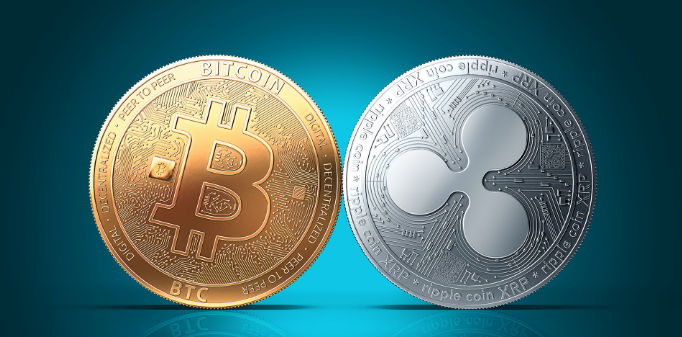If you were under the comforting illusion that Bitcoin sprang fully formed from the head of Satoshi Nakamoto like some digital Athena, pull up a chair and prepare to have your timeline rearranged. Thanks to some recently exhumed emails from 2014, it turns out Ripple was already flexing its payment-system muscles waaaay back in 2004.
Yes, you read that right: 2004. Back when people were still nervously asking Jeeves and nobody would have trusted Mark Zuckerberg to run a lemonade stand, let alone their data. These time-traveling emails—dug up by XRP-wrangler SMOQE—feature the musings of tech scribe Reutzel Bailey and industry veteran Jeffrey Cliff, who apparently prefer their revelations with a side of mild controversy. 🍿
Sure, Satoshi hit the scene with the Bitcoin whitepaper in 2008, but according to this exchange, Ripple’s roots were already sipping water and checking the weather long before the first bitcoin block was even a glimmer in a mathematician’s eye. (January 2009, for those keeping score at home.)
Email Exchange Raises Timeline Questions
Let’s break it down. In a 2014 email back-and-forth (where, one hopes, everyone at least used spellcheck), Bailey highlights that a certain Ryan Fugger drafted a peer-to-peer payment system in 2004 called RipplePay. Was it a cryptocurrency? Not unless your idea of crypto comes with zero mining rigs and coffee-shop levels of excitement.
RipplePay was just a clever way to shuffle IOUs between friends—trust, but verify, and very much not “public, mined cryptocurrency” territory. Along came Chris Larsen, who, after catching a glimpse of Bitcoin’s hype train, thought: “Hey, what if we added a bit of Satoshi sparkle?”
Cliff chimed in to clarify (and perhaps defend his own LinkedIn clout) that yes, Ripple did come first—though, for the record, it wasn’t trying to be Bitcoin’s stylish younger cousin or a “math-based copycat.” No sibling rivalry here. 🤷♂️
2014 E-mails confirm: “Ripple is older than Bitcoin.”
— SMQKE (@SMQKEDQG) June 24, 2025
RipplePay’s Early Vision
Back in the day, Fugger’s proto-Ripple was less concerned with high-voltage crypto mining and more interested in moving value at light speed between people who actually trusted each other. The original vision? Decentralized trust (sort of), but only among the cool kids with the secret password.
The system approved transactions via a cozy circle of validators—zero chance of anyone building a GPU farm in their basement for fun and profit. The whole setup was fast, private, and about as “open” as a velvet-roped nightclub. It wasn’t until 2011 that anyone even whispered about a permissionless network open to the masses. Welcome to the big stage, folks. 🕺

XRP Ledger Emerges In 2012
With the calendar page flipped to 2011, in wandered Jed McCaleb, Arthur Britto, and David Schwartz, fueled by caffeine and visions of besting Bitcoin without the proof-of-work headache. They built the XRP Ledger, a slick operation that let you transfer value without melting polar ice caps.
By 2012, Fugger passed the virtual baton, letting McCaleb, Larsen, and a handful of merry coders launch something called NewCoin (one can only assume they had bigger ambitions for the brand). That became OpenCoin in 2013, and finally Ripple in 2015—because in tech, if you haven’t rebranded at least three times, are you even trying?
The XRP token itself? Live in 2012, beating your houseplants to maturity and Netflix’s one millionth US subscriber by a solid three years. McCaleb kept busy, selling the last of his coins in 2022—long after most people remembered what XRP even stands for.

Token Gifts And Executive Moves
It wouldn’t be a modern tech tale without an enormous stash of tokens. The XRP founders gifted 80 billion tokens to Ripple, proving that inflation is alive and well in crypto fairyland. McCaleb pocketed a cool 9.5 billion XRP, agreeing to sell it in drips and drabs instead of tsunami-style. (Fear not: the suspense ended in 2022 when he finally sold out and skipped off to help spawn Stellar—because, once you’ve invented one payment network, why not do it again?)
Larsen, meanwhile, has the staying power of a late-night infomercial. He’s still around as Ripple’s chairman, waving the company flag for anyone still watching.
Bitcoin will always get the guest-of-honor seat at the crypto dinner party, but history—at least according to these dusty emails—suggests Ripple was doodling decentralization on the back of napkins years before Satoshi ever hit “send.” Consider your trivia arsenal officially upgraded. 🍻
Read More
- USD MXN PREDICTION
- 10 Most Anticipated Anime of 2025
- Pi Network (PI) Price Prediction for 2025
- Silver Rate Forecast
- How to Watch 2025 NBA Draft Live Online Without Cable
- USD JPY PREDICTION
- USD CNY PREDICTION
- Brent Oil Forecast
- Gold Rate Forecast
- PUBG Mobile heads back to Riyadh for EWC 2025
2025-06-26 08:31